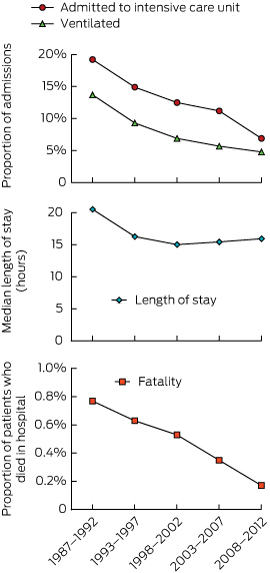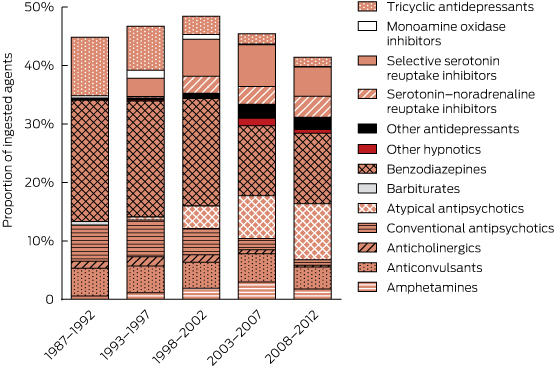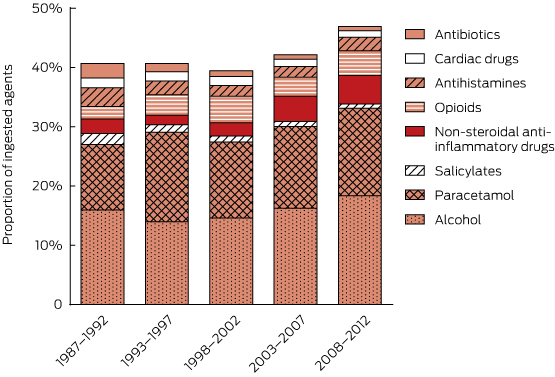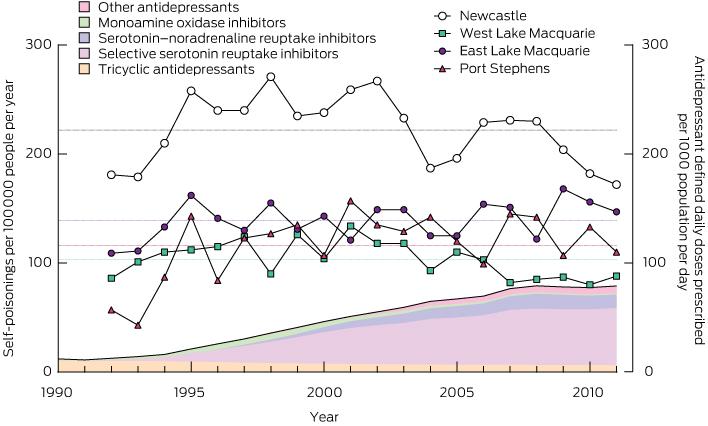Community treatment orders have become standard practice without serious consideration of the underlying research base
Community treatment orders (CTOs) require someone with a mental illness to follow a treatment plan while living in the community.1 Initially, debate focused on the ethical justification for CTOs, but subsequently shifted to their effectiveness. These considerations are particularly relevant to Australia as a few states, such as Victoria, have among the highest rates of CTO use in the world.2 Further, CTOs may also be incompatible with Australia’s obligations to the United Nations Convention on the Rights of Persons with Disabilities.3 Here, we present a consensus from two authors who have previously expressed very different views on the use of CTOs.1
We note, at the outset, a lack of clarity about the purpose, or purposes, of CTOs. Are they to reduce revolving-door admissions, provide a less restrictive alternative to involuntary admission, prevent violence by people with severe mental illness, or increase stability and promote recovery? These different aims involve a range of different outcomes: hospital use, perceived coercion, violent acts and quality of life. Uncertainty about their purpose is compounded by the range of different interventions. Interventions include clinician-initiated CTOs or supervised discharge and court-ordered outpatient committal. Supervised discharge coexists with CTOs in several countries including Canada and the United Kingdom.4
CTOs can be either “least restrictive” or “preventative” in function. “Least restrictive” orders are an alternative to involuntary hospitalisation in a person who would otherwise meet the criteria for inpatient commitment. By contrast, “preventative” orders aim to avoid relapse and hospitalisation where someone is at risk but does not currently meet the criteria for compulsory admission. Australian CTOs are clinician-initiated and contain elements of both. They are used either on discharge from hospital, or in the community, and last up to 12 months in Victoria, but less elsewhere. In contrast to many other countries where CTOs can only be used if the person has been previously hospitalised, CTOs are often used as an alternative to admission.
Australian patients on CTOs are typically younger males, with schizophrenia or serious affective disorders, frequent admissions, poor adherence and a forensic history. Indigenous status and/or rurality are not associated with CTO placement, possibly reflecting the availability of services to administer the order in remote areas.5
Research findings of health service use
Before-and-after studies suggest that compulsory community treatment led to increased follow-up with clinical services, a reduction in inpatient admissions and reduced lengths of stay in hospital. Subsequent controlled studies, using matching or multivariate analysis, confirmed increased follow-up with mental health services, as well as improved forensic outcomes, but not reduced hospitalisation6,7
Only randomised controlled trials (RCTs) can fully control for potential confounders. There have been three pragmatic studies on the effectiveness of CTOs: two in the late 1990s in North Carolina and New York,8,9and one more recently in the UK.10 None of these demonstrated statistically significant reductions in hospitalisation or improvements in health and forensic outcomes for patients on CTOs.
The two US studies have been the subject of considerable debate. Both excluded patients with a history of violence from randomisation and had high attrition rates resulting in selection bias and reduced study power. In one study, there was also concern about adherence to the research protocol and a smaller than expected sample size.9 A subsequent meta-analysis of the two US studies did not change the negative findings, but only addressed study power, not the other issues.4,7
A non-randomised post-hoc analysis of the North Carolina study reported that CTO placement of more than 180 days was associated with positive outcomes, including decreased hospitalisation and violence.8 However, such an analysis potentially introduced a type of selection bias that randomisation is designed to avoid: individuals may have been maintained on a CTO precisely because they were doing well.
The most recent RCT was the Oxford Community Treatment Order Evaluation Trial (OCTET) in the UK.10 This was a study of clinician-initiated treatment, as opposed to court-ordered interventions, like those examined in the two US RCTs, and therefore is more applicable to other countries with similar provisions. The study randomised patients discharged from hospital to an experimental group (CTOs) or a control group (extended leave under Section 17 of the UK Mental Health Act 1983) and compared their outcomes at 12 months.10 Unlike the US studies, patients with a history of violence were included.
There were no differences in readmissions or length of stay between patients on CTOs and patients in the control group. However, subjects were only included if they were equally suitable for a relatively short period of Section 17 leave or a CTO. Patients who might have especially benefited from a CTO may therefore have been excluded. Further, around 20% of those eligible lacked the capacity to consent or refused to participate. In addition, physicians could make clinical decisions irrespective of the initial randomisation, resulting in over a fifth of those in either arm swapping treatments. A sensitivity analysis to remove these protocol violations may, in turn, have left the study underpowered given the authors’ own calculations.10It will also have not removed the possibility that Section 17 patients who were swapped to a CTO might have been more severely ill than those remaining on Section 17 leave as per the protocol. Finally, the UK trial did not compare CTOs with voluntary treatment but with another type of compulsory community treatment. Although the length of initial compulsory outpatient treatment differed widely between the two groups (medians of 183 days v 8 days), Section 17 patients averaged 4 months on some form of compulsory treatment — a long time for control patients supposedly under voluntary care. This time in compulsory care was mostly due to protocol violations such as the Section 17 patients being changed to CTOs. The lack of difference in outcomes might therefore be explained by the two types of intervention being similar.
In conclusion, the evidence suggesting that CTOs reduce hospitalisation comes primarily from before-and-after studies and the post-hoc analysis of the North Carolina RCT. Most studies with randomised or matched controls have failed to show an effect. However, methodological issues with all the study designs, including the three RCTs, mean that the results have to be interpreted with caution.
Other outcomes
Outcomes in health service use may not reflect outcomes in other important areas such as quality of life or social functioning. The North Carolina RCT reported that subjects on a CTO were significantly less likely to be victimised, but also more likely to report perceived coercion.4,8 The effect on stigma was not reported. In terms of other outcomes, there is no RCT evidence for differences in treatment adherence, social functioning, homelessness, mental state, quality of life and arrests.4,8,9 However, in the case of the forensic outcomes, it is important to note that two studies excluded patients with a history of violence.
Other important or rare outcomes, such as mortality, cannot easily be assessed by an RCT. However, epidemiological studies have suggested that CTO cases have reduced mortality rates compared with control patients after adjusting for confounders, possibly by improving physical care through increased contact with community psychiatric services.11
Implications
We suspect that CTOs may initially increase the likelihood of admission because of increased monitoring in the community. Their effect on other outcomes is less clear. In view of the continued uncertainty about the effectiveness of CTOs, what should clinicians and legislators do? As CTOs are coercive, clinicians have a responsibility, irrespective of their effectiveness, to use CTOs judiciously and only if less coercive approaches have failed. Of concern is the marked variation in the use of CTOs in different jurisdictions.2 While it is unclear if this indicates overuse or underuse, clinicians should avoid the temptation to routinely place patients on CTOs. In addition, one potential conclusion from the UK OCTET study is that briefer conditional leave may suffice for some patients and should therefore be considered when both CTOs and conditional leave are available.
Policymakers must recognise that CTOs are a vehicle for delivering services and are not an alternative to providing care. Governments should also avoid naming the relevant CTO legislation after victims of violence by people with mental illness; examples include Laura’s, Kendra’s and Brian’s Law.1Naming CTO legislation after victims of violence is stigmatising and perpetuates an erroneous belief that people with mental illness are dangerous. Also, while there is non-randomised evidence that CTOs may reduce violence by individuals with untreated illness, this has not been confirmed in subsequent RCTs.8,9 Further, CTOs cannot prevent all potential violence as many individuals only come under professional care after they have offended, and others are inaccurately assessed as at low risk of violence.
Future directions
There is sufficient uncertainty about the effectiveness of CTOs to warrant further RCTs. Trials should have adequate sample sizes with minimal exclusion criteria and compare patients on CTOs with control patients receiving entirely voluntary care, as opposed to compulsory treatment of any form. Multiple outcomes should be assessed — not simply hospitalisation — and the optimum length of treatment should also be evaluated. Given the difficulties of achieving a balance between intervention and control arms, as well as the complexities of obtaining informed voluntary consent, we also need complementary well conducted, large-scale, quasi-experimental and naturalistic studies with rigorous multivariable statistical controls. In addition, while individuals on CTOs feel coerced, there is less understanding about the relative importance of this coercion vis-a-vis other negative outcomes.8
Conclusions
CTOs have become standard practice in Australia without questioning of the wide variations in their use or their research base. When evidence of clinical effectiveness is unclear, health policy is more likely to be shaped by political and social factors. Given several Australian Mental Health Acts are under review, the issue is too important to be uninformed by reliable data.

 more_vert
more_vert



